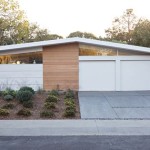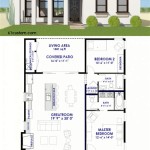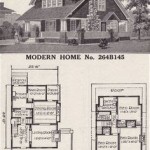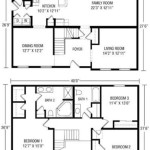A Blue Bird House Plan is a set of instructions and specifications for constructing a nesting box specifically designed to attract bluebirds. Blue Bird House Plans provide detailed information on the dimensions, materials, and construction techniques necessary to create a suitable nesting environment for these cavity-nesting birds. For example, the plan might include specifications for the size of the entrance hole, the depth of the nesting chamber, and the type of wood or other materials to be used. By following the instructions of proper Blue Bird House Plans, individuals can create a nesting box that provides a safe and suitable habitat for bluebirds, supporting their populations and promoting their nesting success.
Properly designed Blue Bird House Plans are crucial for providing bluebirds with an optimal nesting environment. These plans consider the specific nesting requirements of bluebirds, such as their preferred nest box size, shape, and entrance hole diameter. By utilizing Blue Bird House Plans, individuals can ensure that the nesting boxes they construct meet the specific needs of bluebirds, increasing the chances of successful nesting and fledgling production.
The construction of bluebird houses using these plans is a rewarding and fulfilling activity that can significantly contribute to the conservation of bluebirds. By providing suitable nesting sites, individuals can play a vital role in supporting the population growth and reproductive success of these beautiful and beneficial birds.
Here are 9 important points about Blue Bird House Plans:
- Specific dimensions for nesting chamber
- Appropriate entrance hole diameter
- Durable and weather-resistant materials
- Proper ventilation and drainage
- Predator guards to deter nest raiders
- Easy to clean and maintain
- Suitable mounting options
- Clear instructions and diagrams
- Support bluebird conservation efforts
These factors ensure the nesting boxes are suitable for bluebirds, promote successful nesting, and contribute to the conservation of these birds.
Specific dimensions for nesting chamber
The nesting chamber is the most important part of a bluebird house, as it provides the nesting space for the birds. The dimensions of the nesting chamber should be carefully considered to ensure that it is the right size for bluebirds and to prevent other birds from using the box.
- Size
The ideal size for a bluebird nesting chamber is 5 inches by 5 inches by 6 inches (12.7 cm by 12.7 cm by 15.2 cm). This size provides enough space for the birds to move around and build their nest, but it is not so large that it attracts other birds, such as house sparrows, which can compete with bluebirds for nesting sites.
- Shape
The nesting chamber should be rectangular in shape, with a flat bottom and vertical sides. This shape helps to prevent the eggs and chicks from rolling out of the nest.
- Height
The nesting chamber should be 6 inches (15.2 cm) tall. This height provides enough space for the birds to stand up and turn around inside the nest, but it is not so tall that the chicks can jump out.
- Entrance hole
The entrance hole should be 1.5 inches (3.8 cm) in diameter. This size allows the bluebirds to enter and exit the nest easily, but it is small enough to deter predators, such as raccoons and squirrels.
By following these guidelines, you can ensure that the nesting chamber in your bluebird house is the right size and shape for bluebirds.
Appropriate entrance hole diameter
The entrance hole diameter is a critical aspect of a bluebird house plan as it directly impacts the safety and usability of the nesting box for bluebirds while deterring unwanted guests.
- Size
The entrance hole should be 1.5 inches (3.8 cm) in diameter. This size allows bluebirds to enter and exit the nest easily, but it is small enough to deter predators such as raccoons and squirrels.
- Shape
The entrance hole should be round, as this shape is less likely to attract predators than other shapes, such as ovals or squares.
- Placement
The entrance hole should be placed near the top of the nesting chamber, about 6 inches (15.2 cm) above the floor. This placement helps to prevent predators from reaching the eggs and chicks.
- Orientation
The entrance hole should face away from prevailing winds and direct sunlight. This orientation helps to protect the nest from the elements and keep the chicks warm.
By following these guidelines, you can ensure that the entrance hole in your bluebird house is the right size, shape, placement, and orientation for bluebirds.
Durable and weather-resistant materials
The materials used to construct a bluebird house should be durable and weather-resistant to ensure that the nest box can withstand the elements and provide a safe and dry nesting environment for the birds.
- Wood
Wood is a popular material for bluebird houses because it is durable, weather-resistant, and easy to work with. However, not all types of wood are suitable for use in bluebird houses. Cedar and redwood are ideal choices because they are naturally rot-resistant and can withstand the elements well. Pine and fir are also acceptable, but they may need to be treated with a water-resistant sealant to protect them from rot and decay.
- Plastic
Plastic is another durable and weather-resistant material that can be used to construct bluebird houses. Plastic is easy to clean and maintain, and it is not susceptible to rot or decay. However, plastic can become brittle in cold weather, so it is important to choose a plastic that is rated for outdoor use.
- Metal
Metal is a durable and weather-resistant material that can also be used to construct bluebird houses. Aluminum and galvanized steel are good choices because they are lightweight and rust-resistant. However, metal can get hot in the sun, so it is important to provide ventilation in the nest box to prevent the chicks from overheating.
- Other materials
There are a variety of other materials that can be used to construct bluebird houses, such as recycled plastic lumber, composite materials, and even gourds. These materials can be durable and weather-resistant, but it is important to research the specific material you choose to ensure that it is suitable for use in a bluebird house.
By using durable and weather-resistant materials, you can ensure that your bluebird house will last for many years and provide a safe and dry nesting environment for bluebirds.
Proper ventilation and drainage
Proper ventilation and drainage are essential for a bluebird house to provide a healthy and comfortable environment for the birds. Ventilation helps to circulate air and prevent the nest from becoming too humid, which can lead to mold and mildew growth. Drainage helps to remove excess water from the nest, which can help to prevent the eggs and chicks from becoming wet and cold.
- Ventilation holes
Ventilation holes should be placed near the top of the nest box, on opposite sides. The holes should be about 1/2 inch (1.3 cm) in diameter and should be covered with a wire mesh to prevent predators from entering the nest.
- Drainage holes
Drainage holes should be placed in the bottom of the nest box, near the corners. The holes should be about 1/4 inch (0.6 cm) in diameter and should be covered with a wire mesh to prevent predators from entering the nest.
By providing proper ventilation and drainage, you can help to ensure that your bluebird house is a safe and healthy place for the birds to nest.
Predator guards to deter nest raiders
Predator guards are an important part of a bluebird house plan as they help to protect the eggs and chicks from predators such as raccoons, squirrels, snakes, and cats.
There are a variety of different types of predator guards that can be used on bluebird houses, including:
- Baffles
Baffles are metal or plastic discs that are placed around the entrance hole of the nest box. Baffles make it difficult for predators to reach the eggs and chicks inside the nest.
- Cones
Cones are metal or plastic cones that are placed over the entrance hole of the nest box. Cones make it difficult for predators to reach the eggs and chicks inside the nest, and they also help to keep the nest dry.
- Predator guards
Predator guards are metal or plastic devices that are placed around the base of the nest box. Predator guards make it difficult for predators to climb up the nest box and reach the eggs and chicks inside.
When choosing a predator guard, it is important to select one that is the right size for your nest box and that is made from durable materials. It is also important to install the predator guard properly to ensure that it is effective in deterring predators.
By using a predator guard on your bluebird house, you can help to protect the eggs and chicks from predators and increase their chances of survival.
Easy to clean and maintain
A well-maintained bluebird house will last for many years and provide a safe and comfortable nesting environment for generations of bluebirds. Regular cleaning and maintenance are essential to keep the nest box in good condition and to prevent the buildup of parasites and diseases.
To clean a bluebird house, follow these steps:
- Remove the old nesting material from the nest box.
- Wash the nest box with a mild soap and water solution.
- Rinse the nest box thoroughly with clean water.
- Allow the nest box to dry completely before replacing it in the nesting area.
It is also important to inspect the nest box regularly for any signs of damage. Repair any damage promptly to prevent the nest box from becoming unusable.
By following these simple tips, you can help to keep your bluebird house clean and maintained, and provide a safe and comfortable nesting environment for bluebirds.
Here are some additional tips for cleaning and maintaining your bluebird house:
- Clean the nest box at least once a year, in the fall after the nesting season is over.
- If the nest box is heavily soiled, you may need to clean it more often.
- Use a soft brush to remove any dirt or debris from the nest box.
- Do not use harsh chemicals or bleach to clean the nest box, as this can damage the wood.
- Allow the nest box to dry completely before replacing it in the nesting area.
By following these tips, you can help to keep your bluebird house in good condition and provide a safe and comfortable nesting environment for bluebirds for many years to come.
Suitable mounting options
Choosing the right mounting option for your bluebird house is important to ensure that the house is stable and secure, and that it is placed in a location where bluebirds are likely to nest. There are a variety of different mounting options available, so you can choose the one that best suits your needs and the location where you want to place the house.
Here are some of the most common mounting options for bluebird houses:
- Post or pole
Mounting a bluebird house on a post or pole is a good option if you want to place the house in an open area, such as a field or meadow. To mount the house on a post or pole, you will need to use a bracket or other type of support to secure the house to the post.
- Tree
Mounting a bluebird house in a tree is a good option if you want to place the house in a more natural setting. To mount the house in a tree, you will need to use a screw or nail to attach the house to the tree trunk.
- Fence post
Mounting a bluebird house on a fence post is a good option if you want to place the house in a convenient location, such as near your home or garden. To mount the house on a fence post, you will need to use a bracket or other type of support to secure the house to the post.
- Wall
Mounting a bluebird house on a wall is a good option if you want to place the house in a protected location, such as on a porch or shed. To mount the house on a wall, you will need to use screws or nails to attach the house to the wall.
When choosing a mounting option for your bluebird house, it is important to consider the following factors:
- Stability
The mounting option you choose should be stable and secure enough to support the weight of the house and its occupants.
- Location
The mounting option you choose should place the house in a location where bluebirds are likely to nest. Bluebirds prefer to nest in open areas with plenty of sunlight and protection from the wind.
- Accessibility
The mounting option you choose should allow you to easily access the house for cleaning and maintenance.
By choosing the right mounting option for your bluebird house, you can help to ensure that the house is safe and secure, and that it is placed in a location where bluebirds are likely to nest.
Clear instructions and diagrams
Clear instructions and diagrams are essential for a well-designed Blue Bird House Plan. These instructions should provide detailed information on every aspect of the house’s construction, from the materials to use to the step-by-step assembly process. Diagrams can be especially helpful in illustrating complex construction techniques or providing a visual representation of the finished product.
The instructions should be written in a clear and concise manner, using simple language that is easy to understand. They should also be well-organized, with each step of the construction process clearly outlined. Diagrams should be accurate and detailed, providing a clear visual representation of the house’s components and how they fit together.
By providing clear instructions and diagrams, Blue Bird House Plans can help even novice woodworkers to build a sturdy and attractive home for these beautiful birds. Complete and accurate plans will ensure that the house is constructed correctly, providing a safe and comfortable nesting environment for bluebirds.
In addition to providing clear instructions and diagrams, Blue Bird House Plans should also include information on the best materials to use and where to find them. The plans should also provide tips on how to install the house properly and how to maintain it over time. By following the instructions and tips provided in the plan, you can build a beautiful and durable bluebird house that will provide years of enjoyment for you and the birds.
Here are some additional tips for creating clear and informative Blue Bird House Plans:
- Use step-by-step instructions with clear and concise language.
- Include detailed diagrams and illustrations to supplement the written instructions.
- Provide a materials list with specific quantities and dimensions for each item.
- Include tips on how to install the house properly and how to maintain it over time.
- Make sure the plans are well-organized and easy to follow.
By following these tips, you can create Blue Bird House Plans that are clear, informative, and easy to use.
Support bluebird conservation efforts
Bluebird populations have declined in recent years due to habitat loss, competition from other birds, and the use of pesticides. Building and installing bluebird houses is a simple and effective way to support bluebird conservation efforts and help these beautiful birds to thrive.
Bluebirds are cavity-nesting birds, meaning that they build their nests in holes in trees or other structures. Bluebird houses provide bluebirds with a safe and suitable place to nest and raise their young. By providing bluebird houses, you can help to increase the number of bluebirds in your area and contribute to the conservation of this species.
In addition to providing nesting sites, bluebird houses can also help to protect bluebirds from predators. Bluebirds are often preyed upon by snakes, cats, and other animals. Bluebird houses provide bluebirds with a safe place to nest and raise their young, away from the reach of predators.
Building and installing bluebird houses is a rewarding and fun activity that can help to support bluebird conservation efforts. By providing bluebirds with a safe and suitable place to nest, you can help these beautiful birds to thrive and enjoy them for generations to come.
Here are some additional ways that you can support bluebird conservation efforts:
- Avoid using pesticides in your yard.
- Plant native trees and shrubs to provide bluebirds with food and shelter.
- Educate others about the importance of bluebird conservation.
- Support organizations that are working to protect bluebirds.
By taking these simple steps, you can help to make a difference for bluebirds and ensure that these beautiful birds continue to grace our skies for many years to come.










Related Posts








